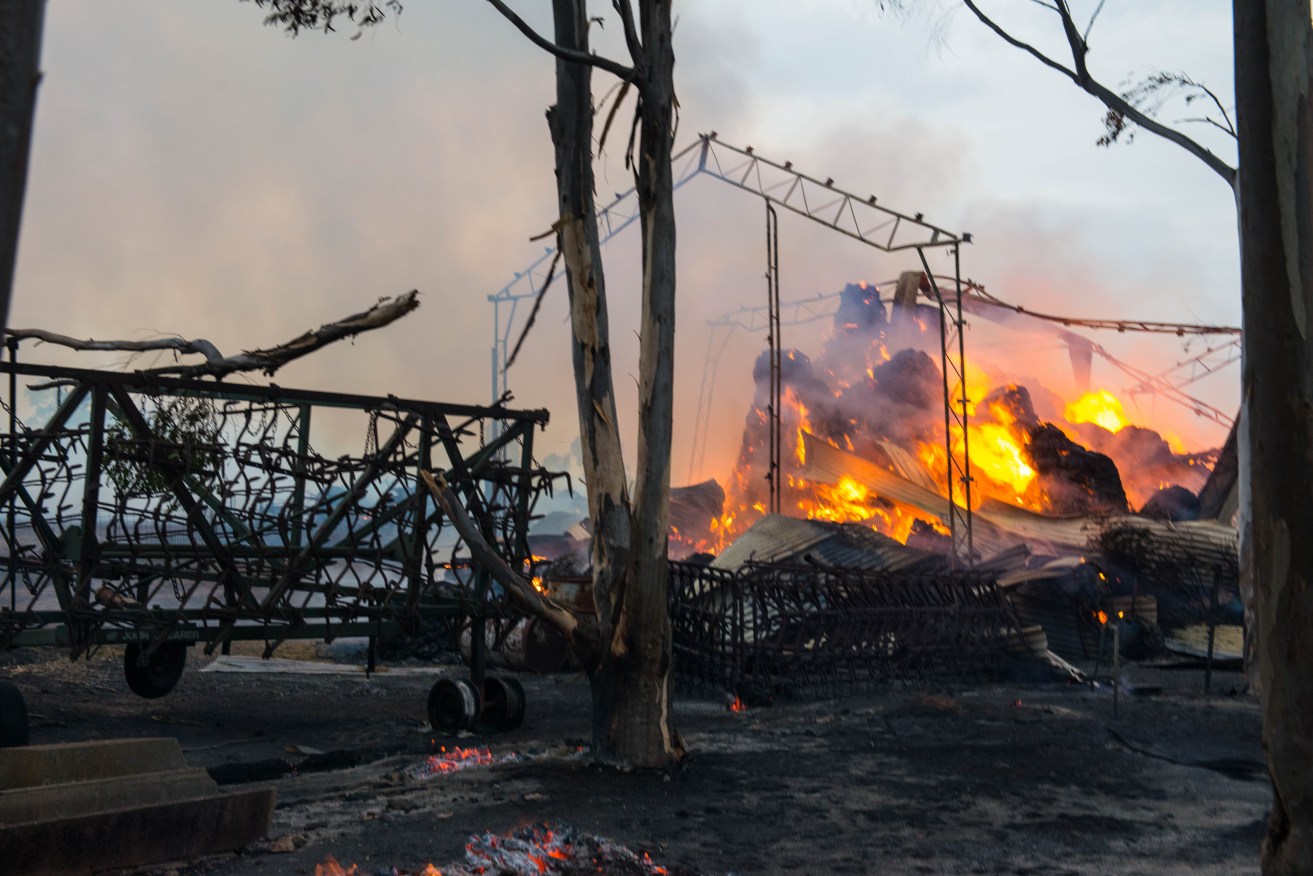Bushfire threat upgraded for southern Australia
The bushfire threat has been upgraded for much of southern Australia after a wet winter and spring fuelled strong vegetation growth that could feed blazes over summer.

A shed burns at the entrance to Freeling during last year's Pinery bushfire. AAP Image/Brenton Edwards
A hotter- and drier-than-average December is expected to dry out that vegetation, leaving behind a high fuel load as summer kicks in.
More areas are now expected to experience above normal fire conditions, including the bushfire-prone states of Victoria and NSW.
South Australia is expecting normal levels of fire activity over the summer, but there are some exceptions.
Parts of the Upper South East, Murraylands and Riverland, are likely to see an above normal fire risk because they’ve been so dry in recent years.
The heightened risk follows Australia’s second wettest winter on record and then a very wet September that broke rainfall records in parts of NSW, Victoria, South Australia and Queensland.
“Further rainfall is expected to be average to below average in most areas,” the Bushfire and Natural Hazards Co-operative Research Centre said in its November update, released on Wednesday.
“When this is coupled with summer temperatures that are forecast to be average to above average, more areas are now expected to experience above normal fire conditions.”
Grassland areas in Victoria and NSW are particularly at risk, with high rainfall creating ideal conditions for growth.
But the wet conditions leading into summer mean all states and the ACT are facing an increased risk of grass fires.
In fire-prone Victoria, most of the state is facing an above normal bushfire season, with West and South Gippsland possible hot spots for both forest and grass fires.
Heading south across the border, prolific grass growth means most of central NSW, along with southern border regions, are also facing an above normal fire risk.
In the ACT, hotter, drier forecasts for the months ahead means there’s some potential for wildfires but probably not before January.
In Queensland, the likelihood of a dry, hot summer, particularly in December, means the bushfire risk for the southeast is also above normal.
In Western Australia, a normal fire season is expected in the Gascoyne, Murchison, Goldfields, Central West and Desert areas.
But the risk level is above normal in the Western Pilbara, and the Eucla and South West regions.
In Tasmania, a normal or below normal fire season is expected, with November rains reducing the threat level.
But dry conditions expected in early summer mean that could change in grassland areas from February onwards, as the vegetation dries out.
The update did not provide a snapshot for the Northern Territory.
– AAP




